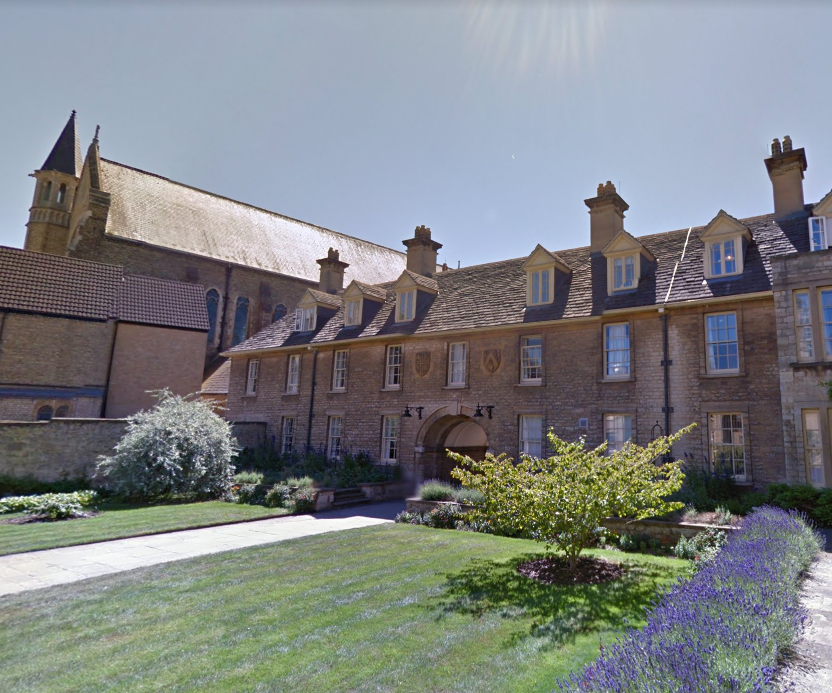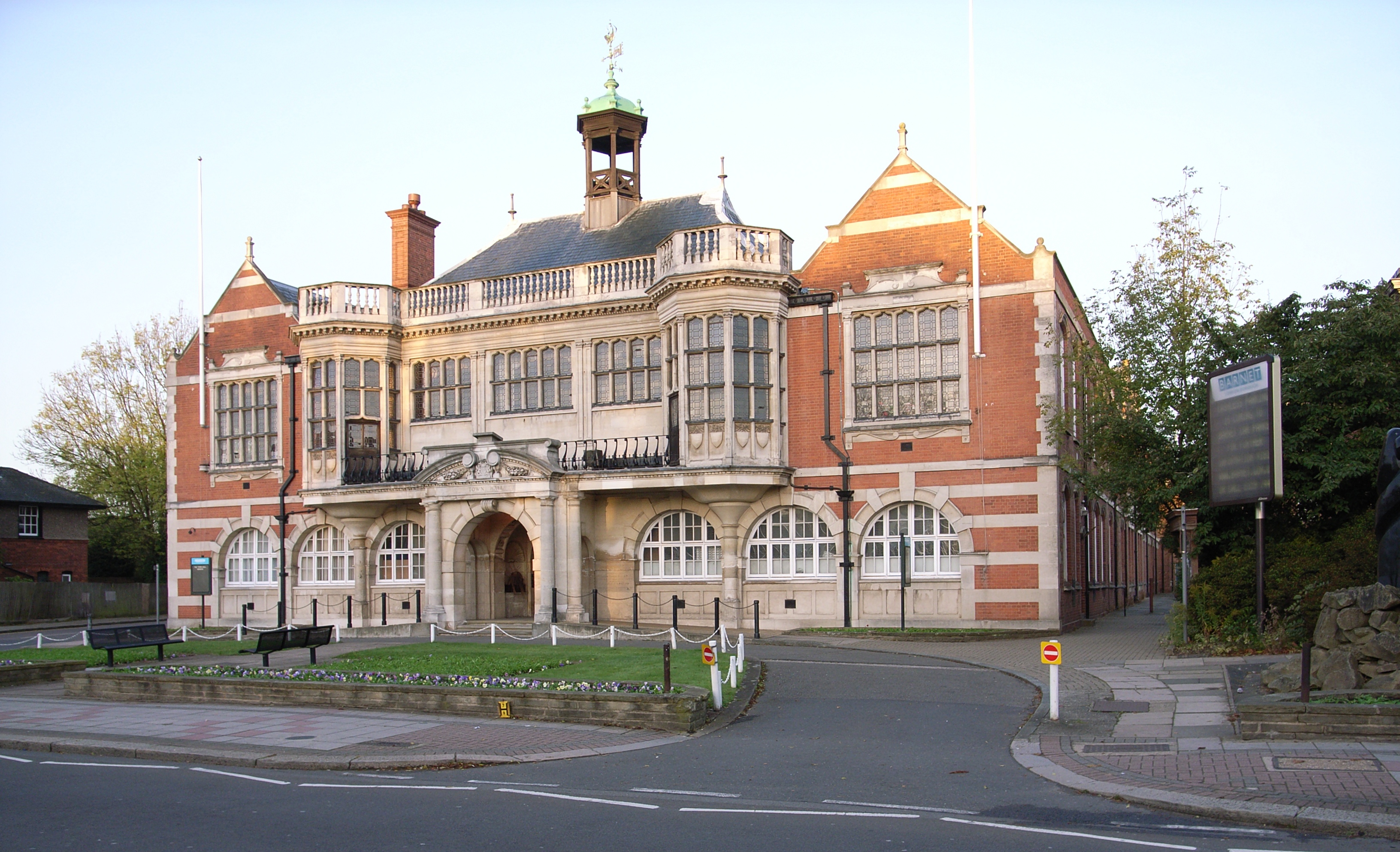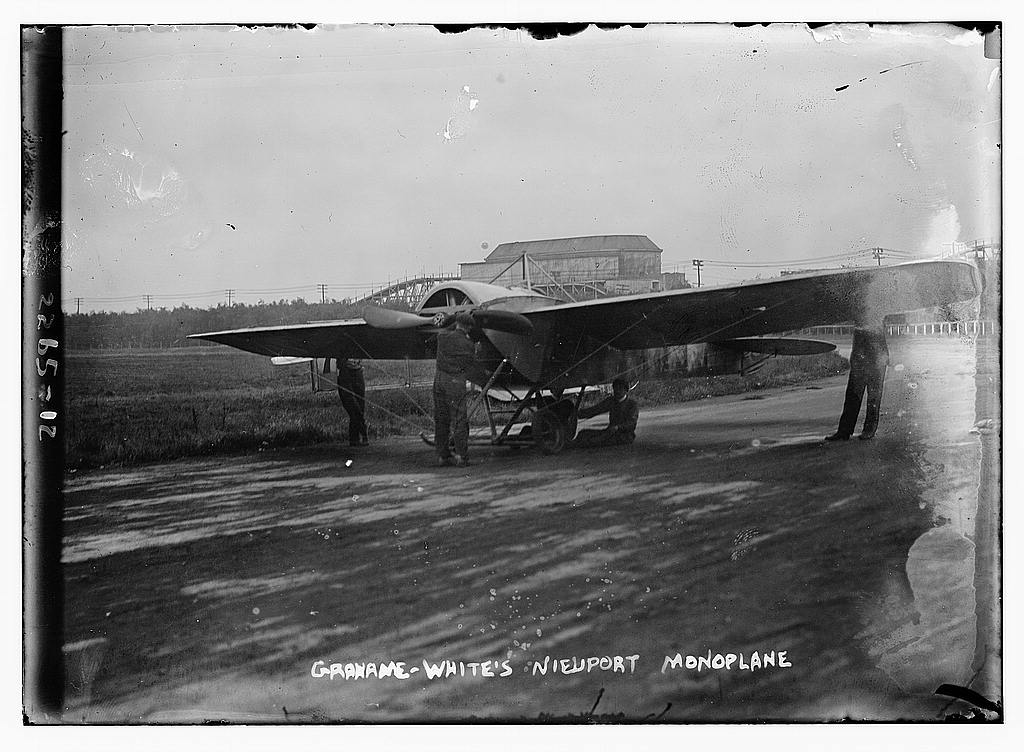|
Hendon School
Hendon School is a mixed secondary school in Golders Rise, Hendon, with academy status since November 2011 (previously a comprehensive) in the London Borough of Barnet. It specialises in languages, offering lessons amongst others to its students. Overview Hendon School is a mixed comprehensive school with 1,296 pupils on roll, including approximately 240 sixth form students. The school is situated just off the A502 and North Circular Road in London. It serves an area that is generally more affluent than average but has some pockets of deprivation, as interpreted in comparison to national averages according to Ofsted. The student population is culturally diverse, multi-faith and multi-lingual, with more than half of students speaking languages other than English as their first language. The proportion of students eligible for free school meals is well above the national average. The school specialises in languages, and has specialist educational facilities for deaf students ... [...More Info...] [...Related Items...] OR: [Wikipedia] [Google] [Baidu] |
Academy (English School)
An academy school in England is a state-funded school which is directly funded by the Department for Education and independent of local authority control. The terms of the arrangements are set out in individual Academy Funding Agreements. Most academies are secondary schools, though slightly more than 25% of primary schools (4,363 as of December 2017) are academies. Academies are self-governing non-profit charitable trusts and may receive additional support from personal or corporate sponsors, either financially or in kind. Academies are inspected and follow the same rules on admissions, special educational needs and exclusions as other state schools and students sit the same national exams. They have more autonomy with the National Curriculum, but do have to ensure that their curriculum is broad and balanced, and that it includes the core subjects of English, maths and science. They must also teach relationships and sex education, and religious education. They are free ... [...More Info...] [...Related Items...] OR: [Wikipedia] [Google] [Baidu] |
History Of Education In England
The history of education in England is documented from Saxon settlement of England, and the setting up of the first cathedral schools in 597 and 604. Education in England remained closely linked to religious institutions until the nineteenth century, although charity schools and "free grammar schools", which were open to children of any religious beliefs, became more common in the early modern period. Nineteenth century reforms expanded education provision and introduced widespread state-funded schools. By the 1880s education was compulsory for children aged 5 to 10, with the school leaving age progressively raised since then, most recently to 18 in 2015. The education system was expanded and reorganised multiple times throughout the 20th century, with a Tripartite System introduced in the 1940s, splitting secondary education into grammar schools, secondary technical schools and secondary modern schools. In the 1960s this began to be phased out in favour of comprehensive schools ... [...More Info...] [...Related Items...] OR: [Wikipedia] [Google] [Baidu] |
School Standards And Framework Act 1998
The School Standards and Framework Act 1998 was the major education legislation passed by the incoming Labour government led by Tony Blair. This Act: * imposed a limit of 30 on infant class sizes. * abolished grant-maintained schools, introducing foundation status. * provided for a schedule of fully selective state schools (grammar schools), and set up a procedure by which local communities could vote for their abolition. No grammar schools have yet been abolished using this mechanism. * prohibited the expansion of partial selection but allowed some specialist schools to admit 10% of pupils based on aptitude in their subject specialisms. * introduced super headteachers and Education Action Zones * introduced an Admissions Code and the office of Schools Adjudicator to enforce this Code and consider objections to admission arrangements. *introduced a right of appeal against the refusal of an admission authority to offer an applicant child a place at the relevant school. * expanded ... [...More Info...] [...Related Items...] OR: [Wikipedia] [Google] [Baidu] |
Foundation School
In England and Wales, a foundation school is a state-funded school in which the governing body has greater freedom in the running of the school than in community schools. Foundation schools were set up under the School Standards and Framework Act 1998 to replace grant-maintained schools, which were funded directly by central government. Grant-maintained schools that had previously been voluntary controlled or county schools (but not voluntary aided) usually became foundation schools. Foundation schools are a kind of "maintained school", meaning that they are funded by central government via the local education authority, and do not charge fees to students. As with voluntary controlled schools, all capital and running costs are met by the government. As with voluntary aided schools, the governing body employs the staff and has responsibility for admissions to the school, subject to rules imposed by central government. Pupils follow the National Curriculum. Some foundation scho ... [...More Info...] [...Related Items...] OR: [Wikipedia] [Google] [Baidu] |
Grant-maintained School
Grant-maintained schools or GM schools were state schools in England and Wales between 1988 and 1998 that had opted out of local government control, being funded directly by a grant from central government. Some of these schools had selective admissions procedures. History Grant-maintained status was created by the Education Reform Act 1988, as part of the programme of the Conservative government to create greater diversity in educational provision and to weaken the influence of local education authorities. GM schools would be owned and managed by their own boards of school governors, rather than the local authority. Proposals to convert to grant-maintained status could be initiated by the governing body or by a number of parents, but would then be determined by a ballot of parents. Skegness Grammar School was the first school to apply for, and to receive, grant-maintained status, whilst Castle Hall School in Mirfield was the first GM school to open. The Education Act 1993 mad ... [...More Info...] [...Related Items...] OR: [Wikipedia] [Google] [Baidu] |
London Borough Of Barnet
The London Borough of Barnet () is a suburban London boroughs, London borough in North London. The borough was formed in 1965 from parts of the ceremonial counties of Middlesex and Hertfordshire. It forms part of Outer London and is the largest London borough by population with 384,774 inhabitants, also making it the 13th largest List of English districts by population, district in England. The borough covers an area of , the fourth highest of the 32 London boroughs, and has a population density of 45.8 people per hectare, which ranks it 25th. Barnet borders the Hertfordshire district of Hertsmere to the north and five other London boroughs: London Borough of Camden, Camden and London Borough of Haringey, Haringey to the southeast, London Borough of Enfield, Enfield to the east, as well as London Borough of Harrow, Harrow and London Borough of Brent, Brent to the west of the ancient Watling Street (now the A5 road). The borough's major urban settlements are Hendon, Finchley, Gol ... [...More Info...] [...Related Items...] OR: [Wikipedia] [Google] [Baidu] |
Hendon Aerodrome
Hendon Aerodrome was an aerodrome in London, England, that was an important centre for aviation from 1908 to 1968. It was situated in Colindale, north west of Charing Cross. It nearly became a central hub of civil aviation ("the Charing Cross of he UK'sinternational air routes"), but for the actions of the RAF after the First World War in reserving it for military aviation. It was known as a place of pioneering experiments including the first airmail, the first parachute descent from a powered aircraft, the first night flights, and the first aerial defence of a city. Beginnings Henry Coxwell and James Glaisher were the first to fly from Hendon in a balloon called the Mammoth in 1862. Ballooning at the Brent Reservoir was a popular spectacle for crowds on bank holidays late in the 19th century. The first powered flight from Hendon was in an long non-rigid airship built by Spencer Brothers of Highbury. It took off from the Welsh Harp Reservoir in 1909, piloted by Henry Spen ... [...More Info...] [...Related Items...] OR: [Wikipedia] [Google] [Baidu] |
Claude Grahame-White
Claude Grahame-White (21 August 1879 – 19 August 1959) was an English pioneer of aviation, and the first to make a night flight, during the ''Daily Mail''-sponsored 1910 London to Manchester air race. Early life Claude Grahame-White was born in Bursledon, Hampshire in England on 21 August 1879, and educated at Bedford School, Bedford Grammar School. He learned to drive in 1895, was apprenticed as an engineer and later started his own motor engineering company. Aviation career Grahame-White's interest in aviation was sparked by Louis Blériot's crossing of the English Channel in 1909. This prompted him to go to France, where he attended the Grande Semaine d'Aviation, Reims aviation meeting, at which he met Blériot and subsequently enrolled at his flying school. Grahame-White was one of the first people to qualify as pilot in England, becoming the holder of Royal Aero Club certificate No. 6, List of pilots awarded an Aviator's Certificate by the Royal Aero Club in 1910, ... [...More Info...] [...Related Items...] OR: [Wikipedia] [Google] [Baidu] |
Victoria Of The United Kingdom
Victoria (Alexandrina Victoria; 24 May 1819 – 22 January 1901) was Queen of the United Kingdom of Great Britain and Ireland from 20 June 1837 until her death in 1901. Her reign of 63 years and 216 days was longer than that of any previous British monarch and is known as the Victorian era. It was a period of industrial, political, scientific, and military change within the United Kingdom, and was marked by a great expansion of the British Empire. In 1876, the British Parliament voted to grant her the additional title of Empress of India. Victoria was the daughter of Prince Edward, Duke of Kent and Strathearn (the fourth son of King George III), and Princess Victoria of Saxe-Coburg-Saalfeld. After the deaths of her father and grandfather in 1820, she was raised under close supervision by her mother and her comptroller, John Conroy. She inherited the throne aged 18 after her father's three elder brothers died without surviving legitimate issue. Victoria, a constitutional m ... [...More Info...] [...Related Items...] OR: [Wikipedia] [Google] [Baidu] |
Princess Louise, Duchess Of Argyll
Princess Louise, Duchess of Argyll, (Louisa Caroline Alberta; 18 March 1848 – 3 December 1939) was the sixth child and fourth daughter of Queen Victoria and Prince Albert. In her public life, she was a strong proponent of the arts and higher education and of the feminist cause. Her early life was spent moving among the various royal residences in the company of her family. When her father died in December 1861, the court went into a long period of mourning, to which with time Louise became unsympathetic. She was an able sculptor and artist, and several of her sculptures remain today. She was also a supporter of the feminist movement, corresponding with Josephine Butler, and visiting Elizabeth Garrett. Before her marriage, Louise served as an unofficial secretary to the Queen from 1866 to 1871. The question of Louise's marriage was discussed in the late 1860s. Suitors from the royal houses of Prussia and Denmark were suggested, but Victoria did not want her to marry a foreig ... [...More Info...] [...Related Items...] OR: [Wikipedia] [Google] [Baidu] |
Edgware
Edgware () is a suburban town in northern Greater London, mostly in the London Borough of Barnet but with small parts falling in the London Borough of Harrow and in the London Borough of Brent. Edgware is centred north-northwest of Charing Cross and has its own commercial centre. Edgware has a generally suburban character, typical of the rural-urban fringe. It was an ancient parish in the county of Middlesex directly east of the ancient Watling Street, and gives its name to the present day Edgware Road that runs from central London towards the town. The community benefits from some elevated woodland on a high ridge marking the Hertfordshire border of gravel and sand. It includes the areas of Burnt Oak, The Hale, Edgwarebury, Canons Park, and parts of Queensbury, London, Queensbury. Edgware is principally a shopping and residential area, identified in the London Plan as one of the capital's 35 major centres, and one of the northern termini of the Northern line. It has a Edgware b ... [...More Info...] [...Related Items...] OR: [Wikipedia] [Google] [Baidu] |
Burnt Oak
Burnt Oak is a suburb of London, England, located northwest of Charing Cross. It lies to the west of the M1 motorway between Edgware and Colindale, located predominantly in the London Borough of Barnet, with parts comprising the London Boroughs of Brent and Harrow. It was part of Middlesex until it was transferred to Greater London in 1965. History The earliest recorded use of the name Burnt Oak was in 1754,Weinreb, Ben; Hibbert, Christopher; Keay, Julia; and Keay, John (2011)''The London Encyclopaedia'' (3rd edition) p. 116. Pan Macmillan. Retrieved 1 May 2014. when it was used to refer to a field on the eastern side of Edgware Road (Watling Street) in the Ancient Parish of Hendon. The name originates from the fact that the field had contained an ancient oak tree some time before the 1750s, having been burned by a lightning strike. The tree stood at the boundary of the Little Stanmore parish with the Kingsbury parish. Parts of modern-day Burnt Oak lie on what was once a 3 ... [...More Info...] [...Related Items...] OR: [Wikipedia] [Google] [Baidu] |






%2C_after_Franz_Xavier_Winterhalter_-_Portrait_of_Princess_Louise_(1848-1939).jpg)

